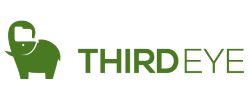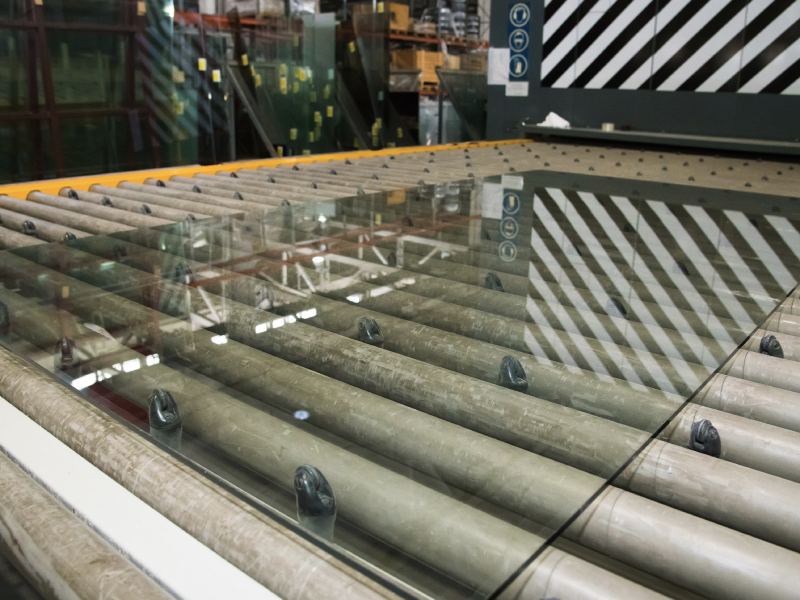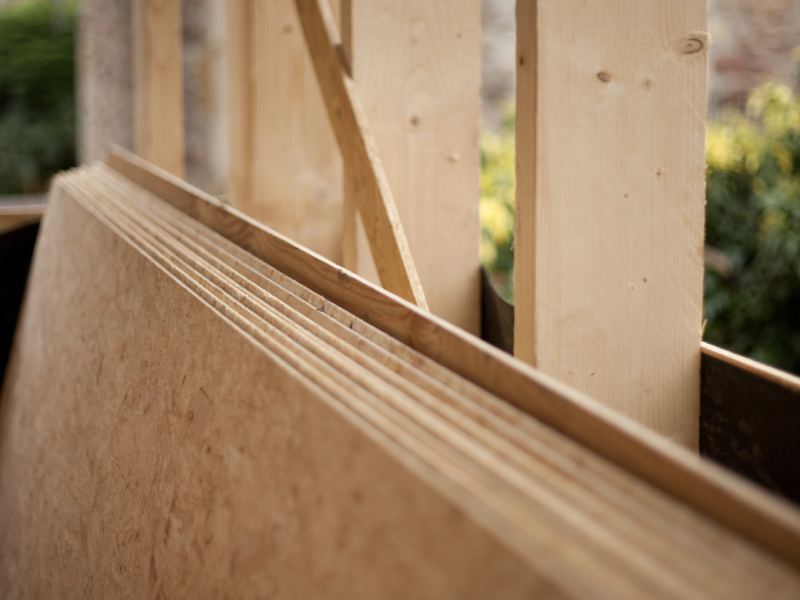Top 9 Applications of AI-Based Quality Inspection in Manufacturing (2025–26)
In 2025–26, global manufacturing stands at an inflection point, where precision, productivity, and profitability converge through AI-based quality inspection systems. According to McKinsey, AI adoption in production can improve defect detection by up to 95%, increase throughput by 30–40%, and reduce inspection labor costs by 50–70%. Meanwhile, the Inspection Software Market is projected to grow from $11B in 2025 to $24.95B by 2032 (Fortune Business Insights).
Key Benefits of AI in Quality Control:
Enhanced Accuracy: AI systems can detect defects that are often imperceptible to the human eye, ensuring higher precision in quality assessments.
Increased Efficiency: Automated inspections reduce the time required for quality checks, leading to faster production cycles.
Scalability: AI solutions can be scaled across multiple production lines and facilities, maintaining consistent quality standards.
Cost Savings: By reducing waste, rework, and labor costs, AI-driven quality control systems offer significant financial benefits.
At ThirdEye Data, we’ve been at the forefront of this AI adoption, developing and deploying AI-powered quality inspection systems for diverse manufacturing clients across automotive, electronics, energy, consumer goods, and pharmaceuticals. Our approach combines deep domain understanding, custom AI engineering, and enterprise-grade data integration. We help manufacturers shift from reactive QC to proactive, predictive, and intelligent inspection ecosystems.
Let’s explore the top nine AI applications adding most business value in the process of quality inspection in manufacturing, and how they drive measurable business value.
Dimensional Accuracy & Shape Deviation
In industries such as automotive and aerospace, maintaining precise dimensional accuracy is critical. Even minor deviations can lead to assembly issues, product failures, and increased costs.
Role of AI Systems for Ensuring Dimensional Accuracy & Detecting Shape Deviation:
AI-based quality control systems utilize 3D vision and point cloud analysis to compare manufactured parts against CAD models, identifying deviations in real time.
Recommended Solution Approaches:
Commercial Tools & Software: NVIDIA Metropolis, Cognex VisionPro
Open Source Technologies: OpenCV, PyTorch3D
Hybrid Approach: Combining commercial hardware with open-source software for customized solutions
How AI Solutions Work:
Capture 3D scans or images of the product
Preprocess the data to remove noise and align with CAD models
Use algorithms like Iterative Closest Point (ICP) to detect deviations
Provide feedback to the production line for immediate corrections
Datasets, Inputs, and Infrastructure:
Datasets: Annotated 3D models, historical defect data
Inputs: CAD files, 3D scans
Infrastructure: Edge computing devices (e.g., NVIDIA Jetson), high-resolution 3D cameras
Tools and Technology Stack:
Cameras: Basler, FLIR
Software: OpenCV, TensorFlow, PyTorch3D
Integration: ROS2, OPC-UA
Estimated Cost:
Development costs range from $70K to $100K, depending on the complexity and scale of the implementation.
Practical ROI and Business Impacts:
Defect Reduction: Up to 60%
Inspection Time: Reduced by 70%
Return on Investment: Achieved within 12–18 months
Insights and Tips:
Regular calibration of 3D scanners is essential to maintain accuracy.
Synthetic data generation can enhance model robustness.
Edge deployment ensures real-time processing and reduces latency.
Surface Quality & Texture Consistency
Surface defects such as scratches, dents, and discoloration can compromise product aesthetics and functionality, particularly in industries like electronics and consumer goods.
Role of AI Systems for Controlling Surface Quality & Texture Consistency:
AI systems employ convolutional neural networks (CNNs) to analyze surface textures, detecting anomalies that may indicate defects.
Recommended Solution Approaches:
Commercial Tools & Software: Cognex VisionPro, Keyence
Open Source Technologies: OpenCV, TensorFlow
Hybrid Approach: Utilizing commercial imaging hardware with custom AI models
How AI Solutions Work:
Capture high-resolution images of the product surface
Preprocess images to normalize lighting and enhance features
Apply CNNs to identify and classify surface anomalies
Trigger alerts or automatic rejection mechanisms
Datasets, Inputs, and Infrastructure:
Datasets: Annotated defect images, texture patterns
Inputs: RGB images, multispectral images
Infrastructure: High-resolution cameras, edge computing devices
Tools and Technology Stack:
Cameras: Basler, FLIR
Software: OpenCV, TensorFlow, Keras
Integration: PLCs, MES systems
Estimated Cost:
Implementation costs range from $60K to $90K, influenced by the complexity of the surface features and required resolution.
Practical ROI and Business Impacts:
Defect Detection Accuracy: Improved to 95%
Inspection Time: Reduced by 50%
Return on Investment: Realized within 6–12 months
Insights and Tips:
Consistent lighting conditions are crucial for accurate surface analysis.
Training models with diverse datasets improves generalization.
Integration with automated sorting systems enhances efficiency.
Color Uniformity & Finish
In industries like textiles and packaging, color consistency is vital for brand identity and consumer satisfaction. Variations can lead to product rejections and customer complaints.
Role of AI Systems to Detect Defects on Color Uniformity & Finish:
AI systems analyze color histograms and apply clustering algorithms to detect deviations from target color profiles.
Recommended Solution Approaches:
Commercial Tools & Software: X-Rite, Datacolor
Open Source Technologies: OpenCV, scikit-image
Hybrid Approach: Combining commercial color measurement devices with open-source software for analysis
How AI Solutions Work:
Capture images under controlled lighting conditions
Convert images to appropriate color spaces (e.g., Lab, HSV)
Apply clustering algorithms to identify color clusters
Compare with reference profiles to detect deviations
Datasets, Inputs, and Infrastructure:
Datasets: Color reference libraries, annotated images
Inputs: RGB images, spectral data
Infrastructure: Colorimeters, spectrophotometers, edge computing devices
Tools and Technology Stack:
Cameras: X-Rite, Basler
Software: OpenCV, scikit-learn, TensorFlow
Integration: MES systems, automated sorting mechanisms
Estimated Cost:
Development costs range from $50K to $80K, depending on the number of SKUs and required color accuracy.
Practical ROI and Business Impacts:
Color Mismatch Reduction: Achieved up to 70%
Inspection Time: Reduced by 60%
Return on Investment: Realized within 6–9 months
Insights and Tips:
Regular calibration of color measurement devices is essential.
Incorporating spectral imaging can enhance accuracy for reflective surfaces.
Batch-specific calibration improves model performance.
Component Presence & Placement Verification
Ensuring all components are present and correctly placed is crucial in industries like electronics and automotive. Missing or misaligned parts can lead to functional failures and safety issues.
Role of AI Systems for Confirming Component Presence & Placement Verification:
AI systems utilize object detection algorithms to verify the presence and correct placement of components in real time.
Recommended Solution Approaches:
Commercial Tools: Cognex In-Sight, Keyence
Open Source Technologies: OpenCV, YOLO, TensorFlow
Hybrid Approach: Combining commercial cameras with custom AI models for detection
How AI Solutions Work:
Capture images of the assembly line
Apply object detection algorithms to identify components
Verify placement and orientation against reference models
Trigger alerts or automatic rejection mechanisms
Datasets, Inputs, and Infrastructure:
Datasets: Annotated images of assemblies, CAD models
Inputs: RGB images, depth maps
Infrastructure: High-resolution cameras, edge computing devices
Tools and Technology Stack:
Cameras: Basler, FLIR
Software: OpenCV, YOLO, TensorFlow
Integration: PLCs, MES systems, robotic arms
Estimated Cost:
Implementation costs range from $60K to $100K, influenced by the complexity of the assemblies and required accuracy.
Practical ROI and Business Impacts:
Misassembly Reduction: Achieved up to 85%
Inspection Time: Reduced by 70%
Return on Investment: Realized within 12–18 months
Insights and Tips:
Training models on multiple orientations enhances detection accuracy.
Early integration into the assembly line prevents defects.
Regular updates to models are necessary to accommodate new components.
Assembly & Alignment Accuracy
In industries such as automotive, aerospace, electronics, and packaging, proper assembly and alignment of components are critical for product functionality, safety, and aesthetics. Misaligned parts can lead to operational failures, increased warranty claims, and customer dissatisfaction. AI-based systems ensure precise fit, alignment, and orientation, reducing errors and improving throughput.
Role of AI Systems for Assembly & Alignment Accuracy:
Detect gaps, misalignments, and incorrect orientation
Verify assembly against CAD models or reference images
Enable real-time feedback to operators or automated machinery
Recommended Solution Approaches:
Commercial Tools: Keyence, Cognex, Hexagon Metrology
Open Source Technologies: OpenCV, PyTorch, TensorFlow, PointNet for 3D point cloud analysis
Hybrid Approach: High-precision commercial cameras for acquisition + AI models trained on historical assembly data
How AI Solutions Work:
Capture images or 3D scans of assembled parts
Preprocess to normalize lighting, orientation, and remove noise
Apply pose estimation, geometric comparison, and edge detection algorithms
Highlight deviations or trigger automated corrections
Datasets, Inputs, and Infrastructure:
Datasets: CAD models, reference images of correctly assembled parts, historical defect data
Inputs: RGB images, depth maps, 3D point clouds
Infrastructure: Edge GPUs for real-time processing, synchronized cameras on assembly line
Tools & Technology Stack:
Cameras: FLIR, Basler, structured light 3D scanners
AI/ML: PyTorch, TensorFlow, OpenCV, 3D vision libraries
Integration: MES, PLCs, robotic actuators
Estimated Cost:
Development and deployment costs: $70K–$120K, depending on assembly complexity and required precision
Practical ROI and Business Impacts:
Defect Reduction: 50–80% reduction in mis-assembled units
Inspection Time: Reduced by 60–70%
Return on Investment: Typically start getting ROI in 12–18 months
Insights & Tips from Hands-on Experience:
Multi-angle imaging improves detection accuracy for complex assemblies
Real-time feedback integration with robotic arms reduces downtime
Synthetic 3D datasets can accelerate model training for rare or complex assembly errors
Contamination or Foreign Material Detection
Industries like food, pharmaceuticals, and semiconductors face serious risks from contamination. Undetected foreign particles can cause recalls, legal liabilities, and safety hazards. AI inspection systems ensure cleanliness and compliance, reducing the risk of defective or unsafe products reaching consumers.
Role of AI Systems for Contamination or Foreign Material Detection:
Detect dust, hair, oil, metal shards, or moisture
Leverage hyperspectral imaging and anomaly detection to spot contaminants invisible to the naked eye
Recommended Solution Approaches:
Commercial Tools: Cognex In-Sight 3D-L4000, Keyence
Open Source: OpenCV + CNN-based anomaly detection, TensorFlow
Hybrid Approach: Industrial cameras with custom-trained ML models for real-time detection
How AI Solutions Work:
Capture RGB, IR, or hyperspectral images of products on the production line
Apply anomaly detection models to identify unexpected patterns
Trigger real-time alerts to halt or divert affected products
Datasets, Inputs, and Infrastructure:
Datasets: Clean vs. contaminated images, historical contamination logs
Inputs: RGB, IR, hyperspectral images
Infrastructure: Edge GPUs, vibration-free mounts, cleanroom-compatible sensors
Tools & Technology Stack:
Cameras: Basler, FLIR, hyperspectral imaging systems
AI/ML: PyTorch, TensorFlow, autoencoder models for anomaly detection
Integration: MES, PLC, automated sorting/conveyor systems
Estimated Cost:
Usually, it costs around $80K–$120K depending on camera resolution and AI complexity
Practical ROI and Business Impacts:
Defective product reduction: 80–95%
Labor savings: 50–60%
Payback: 9–12 months
Insights & Tips:
Use multispectral imaging for transparent or reflective packaging
Augment datasets with synthetic contamination scenarios for rare defect detection
Regular sensor calibration ensures consistent detection
Pattern & Logo Validation
For packaging, branding, and traceability, accurate printing of logos, barcodes, QR codes, and expiration dates is critical. Misprints lead to regulatory issues, brand damage, and supply chain problems.
Role of AI Systems for Pattern & Logo Validation:
Validate printed text, logos, barcodes for clarity, position, and correctness
Use OCR and object detection to verify labels
Recommended Solution Approaches:
Commercial Tools & Software: Cognex VisionPro, Keyence
Open Source: Tesseract OCR, OpenCV, PyTorch
Hybrid Approach: Cameras with OCR models trained on enterprise label datasets
How AI Solutions Work:
Capture high-resolution images of labels/packages
Apply OCR and logo detection models to check accuracy
Trigger alerts for incorrect or missing information
Datasets, Inputs, and Infrastructure:
Datasets: Reference images of correct labels, historical misprints
Inputs: RGB images, high-resolution scans
Infrastructure: Edge GPUs, industrial cameras, line-synchronized lighting
Tools & Technology Stack:
Cameras: Basler, FLIR
AI/ML: Tesseract OCR, YOLOv8, OpenCV
Integration: MES, ERP, automated rejection systems
Estimated Cost:
The average cost for building such AI systems is $60K–$90K.
Practical ROI and Business Impacts:
Mislabel reduction: 90%+
Manual inspection costs: Reduced by 70%
Payback: Within 6–9 months
Insights & Tips:
Keep OCR models updated for new fonts and label designs
Controlled illumination avoids false positives
Combine label verification with real-time line speed monitoring
Real-Time Process Drift Monitoring
Manufacturing processes can gradually drift due to equipment wear, environmental changes, or calibration errors. Detecting these subtle deviations early prevents defects, scrap, and downtime.
Role of AI Systems for Real-Time Process Drift Monitoring:
Continuously analyze production line data and video streams
Detect early signs of misalignment, tool wear, or process drift
Recommended Solution Approaches:
Commercial Tools: Seeq, TrendMiner
Open Source: Python-based statistical monitoring, PyTorch anomaly detection
Hybrid Approach: Edge AI for video + cloud analytics for trend visualization
How AI Solutions Work:
Capture video streams or sensor data from production
Apply statistical models and machine learning for anomaly scoring
Trigger predictive maintenance alerts or adjustments
Datasets, Inputs, and Infrastructure:
Datasets: Historical production metrics, video of normal operations
Inputs: Video feeds, sensor data, vibration or temperature readings
Infrastructure: Edge GPUs, time-synchronized cameras, MES integration
Tools & Technology Stack:
Cameras: Basler, FLIR
AI/ML: LSTM models, autoencoders for anomaly detection
Integration: MES, predictive maintenance software
Estimated Cost:
Average cost is $80K–$120K depending on process complexity
Practical ROI and Business Impacts:
Defect reduction: Up to 40%
Maintenance downtime reduction: 30–50%
Payback: 12–15 months
Insights & Tips:
Combine sensor data with video for higher accuracy
Use rolling windows and trend analysis to avoid false positives
Integrate alerts with operator dashboards for immediate action
Operational Metrics & Production Line Feedback
Understanding real-time production performance is crucial for efficiency and proactive decision-making. AI-based inspection systems not only detect defects but also provide actionable operational insights.
Role of AI Systems for Analyzing Operational Metrics & Providing Production Line Feedback:
Monitor defect rates, throughput, and rejection trends
Trigger automated adjustments in production parameters
Enable closed-loop optimization for line speed, tool temperature, or pressure
Recommended Solution Approaches:
Commercial Tools: Siemens Opcenter, Rockwell Automation FactoryTalk
Open Source: Python dashboards, Grafana, Prometheus, ML-based alerting
Hybrid Approach: Edge AI for real-time metrics, cloud analytics for reporting
How AI Solutions Work:
Aggregate data from AI inspection models and production sensors
Compute KPIs and detect anomalies in real time
Trigger automated corrective actions or operator alerts
Datasets, Inputs, and Infrastructure:
Datasets: Production line historical data, defect logs
Inputs: Sensor readings, camera feeds, MES data
Infrastructure: Edge computing, cloud dashboards, integration with PLC/MES
Tools & Technology Stack:
AI/ML: TensorFlow, PyTorch, scikit-learn
Visualization: Power BI, Grafana, custom dashboards
Integration: MES, PLC, SCADA
Estimated Cost:
The estimated cost for a full-scale deployment comes around $100K–$150K for large scale manufacturers.
Practical ROI and Business Impacts:
Real-time adjustments reduced defect rates by 30–50%
Throughput increased by 20–35%
Return on investment within 12 months
Insights & Tips:
Ensure high-frequency data capture for accurate metrics
Visualize trends for actionable insights
Integrate AI feedback loops for continuous process optimization
Market Insights & Industry Trends
AI adoption in quality inspection is growing rapidly, with the market expected to reach $12.14B by 2030 (Knowledge Sourcing Intelligence)
McKinsey reports that AI can improve defect detection by up to 95%, reduce inspection labor by 50–70%, and increase throughput by 30–40% (McKinsey)
Industries Leading AI-based QC System Adoption: Automotive, Electronics, FMCG, Pharmaceuticals, Textiles, Packaging
ThirdEye Data’s Project References on Developing AI-based Quality Checking & Controlling Systems
Project References: AI-based Quality Checking & Controlling Systems
AI-based quality inspection is no longer a futuristic concept but a present-day reality transforming manufacturing operations. At ThirdEye Data, we have developed a prototype of AI-based quality checking system, available at our AI demo central. From reducing defect rates and improving throughput to enhancing product quality and ensuring regulatory compliance, the benefits are clear.
As the manufacturing industry continues to evolve, embracing AI-driven quality inspection systems will be crucial for staying competitive. By leveraging advanced technologies and real-time data analytics, manufacturers can achieve higher efficiency, lower costs, and improved product quality.
If you’re ready to embark on your AI journey, ThirdEye Data is here to guide you every step of the way. Our team of experts can help you implement tailored AI solutions that meet your specific needs and drive measurable business outcomes.










